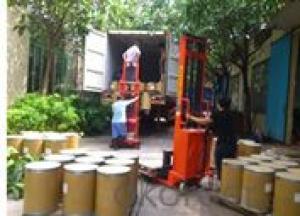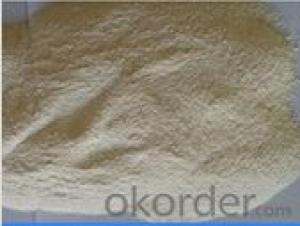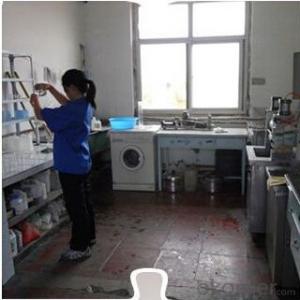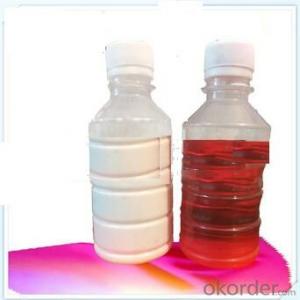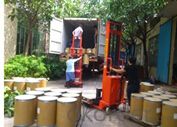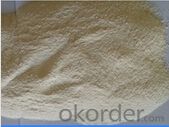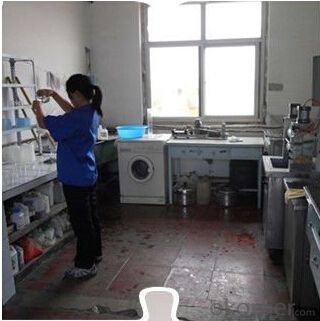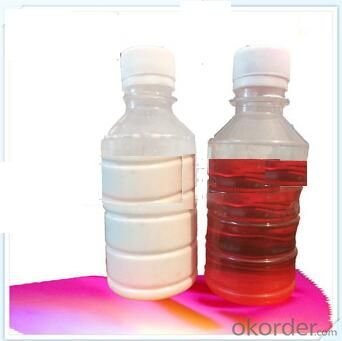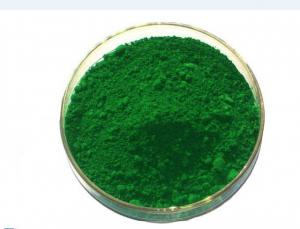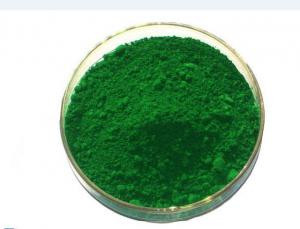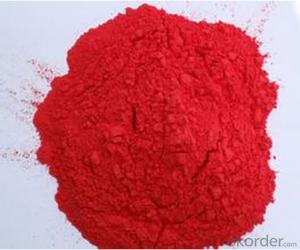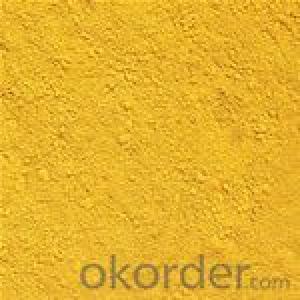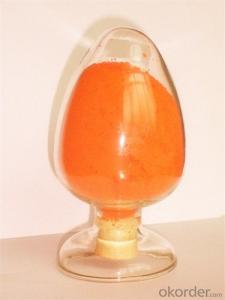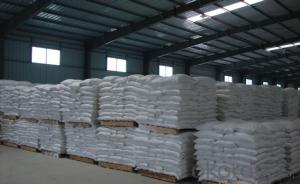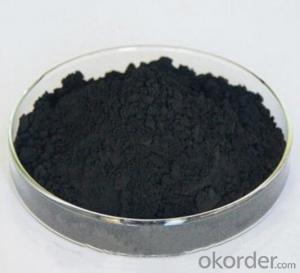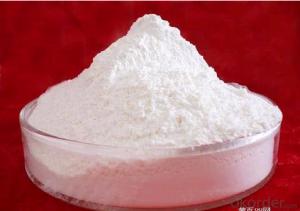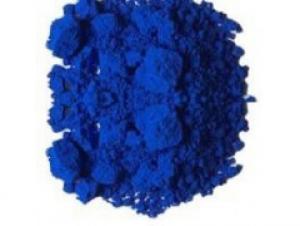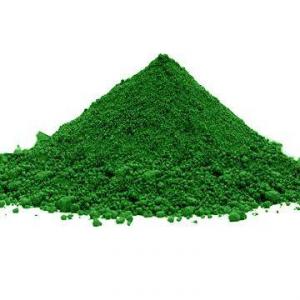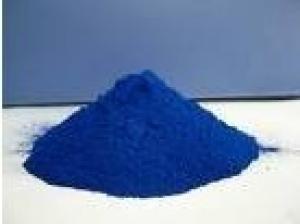textile chemicals from china manufacturer anionic polyacrylamide
- Loading Port:
- Shanghai
- Payment Terms:
- TT OR LC
- Min Order Qty:
- 1 bottle
- Supply Capability:
- 10000 bottle/month
OKorder Service Pledge
OKorder Financial Service
You Might Also Like
1. Product characteristics Anionic polyacrylamide(APAM)series products are water-soluable linear polymers synthesized under high degree polymerization,easily soluble in water,almost insoluble in benzene,ether,aliphatics,acetone and other common organic solvents .at the meantime,APAM series products also have valuable properties like flocculation,thickening,shear property,drag-reduction and dispersibility.thus widely used in oil recovery, mineral processing,coal washing,metallurgy,chemicals,paper,textile,suger,medicine,environmental protection,building materials,agriculture and other industtries.
| |||||
2. Quality index | |||||
Appearance | Solid content(%) | Hydrolysis degree (%) | Molecular weight (million) | Residual monomer content (%) | Dissolution time(hr) |
RTFLOC A20** | ≥89 | 6-45 (ADJUSTABLE) | 5-25 (ADJUSTABLE) | ≤0.05 | ≤1 |
3. Application (1)Displacement agent for tertiary recovery of oilfield. It can adjust the rheology of water injection,increase the viscosity of fisplacing liquid,improve the spreading efficiency of liquid displacement ,bring down the water permeability in strata and keep water and oil to flow at a constant speed.it is mainly used in tertiary recovery of oilfields.injection of each ton of PAM products can help to gather 100-150 tons extra crude oil. (2)Drilling mud material. Used as drilling mud additives in oilfield exploration and development and geology,water conservacy and coal exploration.i can prolong the bit’s life,raise the drilling rate and drilling footage,reduce the time of exchange drills.it has abvious effect in avoiding well collapse.it can also be used as oilfield fracturing fluid and profiling water blocking agent. (3) Industrial wastewater treatment. Especially for the treatment of wastewater containing suspendent particles which is coarse,high concentration and with positive charges and water’s PH value is neutral or alkaline.most effective for wastewater treatment of iron and steel plant,electroplate factory,metallurgy and coal washing. (4)Drinking water treatment. Many water plants in China come from river water,which contains large sum of sediment and mineral,very turbid.after precipitation and filtration,it still can not meet the requirements.flocculant is needed.water plants used to use inorganic flocculants.but large additive amount is required which caused the increase of sludge volume,not effective.use anionic PAM flocculants,with 1/50 additive amount that of inorganic flocculants,several times and even dozens of times effectiveness obtained than that of inorganic flocculants.for those organic polluted river water,better effectiveness can be achieved while mixed used together with cationic PAM. (5)Papermaking additives. Can be used for caustic soda’s clarification.used as retention aid,filter aid,reinforcing agent for wet and dry paper. (6)Clarifying agent in sugar refining industry. (7)Additives and adhesives in aquatic product feedstuff. | |||||
4. Instruction for use (1)It's very important to make the efficient dispersion during using, otherwise will cause agglomerate and "fish eyes", dissolving time will be longer. (2)Low-hardness water for use; avoid adopting such tank or pool, which will influence on water quality. (3)Improve the water temperature to accelerate the dissolving velocity, but not exceed 50. (4)Stirring will accelerate dissolving, but tough stirring will make the dispersant chain broken and degradation. Shipshape agitator with 200 - 500 rpm is the best choice. (5)Commonly mix the product into 0.05%--0.5%(w/w)solution as reserve. (6)Adjust the optimum dosage of product according to application condition. | |||||
- Q: Are carontenoids and anythocyanin accesory pigments.
- Accessory pigments are those , that can not do photosynthesis and manufacture sugar as essential pigment chlorophyll does. But these accessory pigments capture solar energy in the form of photons and then transfer it to chlorophyll molecules / pigments . Thus increasing the power of chlorophyll to do photosynthesis . carontenoids and anythocyanin are accesory pigments. click on the links below to learn more about the accessory pigments - en.wikipedia.org/wiki/Accessory_p... www.ucmp.berkeley.edu/glossary/gl... www.cas.muohio.edu/~meicenrd/BMZ1... Thank you !
- Q: what is pigment dispersion syndrome?
- Pigment dispersion syndrome (PDS) is an affliction of the eye that, if left untreated, can lead a form of glaucoma known as pigmentary glaucoma. It takes place when pigment cells slough off from the back of the iris and float around in the aqueous humor. This is not what causes problems; however, if the pigment flakes clog the trabecular meshwork, preventing the liquids in the eye from draining, pressure can build up inside the eye. This pressure can cause permanent damage to the optic nerve. This condition is rare, but occurs most often in Caucasians, particularly men, and the age of onset is relatively low: mid 20s to 40s. Most sufferers are nearsighted. There is no cure as of yet, but PDS can be managed with eye drops or treated with simple surgeries. If caught early and treated, chances of glaucoma are greatly reduced. Sufferers are often advised not to engage in high-impact sports such as long-distance running or martial arts, as strong impacts can cause more pigment cells to slough off
- Q: Please help me answer these Genetics problems. These are the problems that was assigned in the previous exams, but the professor doesn't provide the answer keys or a review session to go over these.Pigment in the mouse is produced only when the C allele is present. Individuals of the cc genotype have no color. if color is present, it may be determined by the A, a alleles. AA or Aa results in the agouti color, while aa results in the black color. In 3 crosses between agouti females whose genotypes are unknowns and males of the aacc genotype, the following phenotypic ratios were obtained. Female 1: 8 agouti 8 colorlessFemale 2: 4 agouti 5 black 10 colorless
- interior the 1st bypass AACC x aacc, discern a million will produce all AC gametes and discern 2 ac. Your F1 will all be AaCc. As all have the C allele they are going to be pigmented and as they're Aa they're going to all be agouti. Your F1 bypass is AaCc x AaCc. each and each discern can produce 4 gametes AC, Ac, aC, ac. To get all the genotypes you would be able to desire to entice a 4 x 4 Punnett sq.. each and each column and each and each row has between the 4 gametes in it and the cells comprise the blended genotypes. in case you count type up your genotypes you will discover 9 comprise the two A and C, those are agouti, 4 comprise cc, and all of those would be white regardless of the genotype at A, 3 comprise aa and C, those will all be black. So your phenotypic ratio would be 9:4:3 agouti: white: black the subsequent 3 crosses are all attempt crosses - you employ a recessive discern to artwork out the genotype of the different discern. a million. As lots of the offspring are colourless, you be attentive to that the two mothers and dads carry the c allele, as you pick cc for colourless mice. As there are no black mice, there is not any a allele interior the mum, as no aa offspring are produced. The bypass is AACc x aacc. woman gametes are AC or Ac and male gametes are all ac, offspring are the two AaCc or Aacc. 2. Is the opposite of bypass a million. There are black offspring so mom would desire to hold an a allele to furnish black mice, as there are no colourless ones, there is not any c allele interior the mum. you could write down the bypass and the F2 effect now. 3. This time all hues are produced, so the mum would desire to hold the two a and c alleles. Her genotype is AaCc, she would be able to offer 4 gametes as interior the 1st bypass and you will artwork out the resultant genotypes and phenotypes interior the F2.
- Q: How to manufacture FRP pigments?
- Pigment A finely divided material which contributes to optical and other properties of paint, finishes, and coatings. Pigments are insoluble in the coating material, whereas dyes dissolve in and color the coating. Pigments are mechanically mixed with the coating and are deposited when the coating dries. Their physical properties generally are not changed by incorporation in and deposition from the vehicle. Pigments may be classified according to composition (inorganic or organic) or by source (natural or synthetic). However, the most useful classification is by color (white, transparent, or colored) and by function. Special pigments include anticorrosive, metallic, and luminous pigments. See also Dye; Luminous paint; Paint.
- Q: How are plant pigments like teammates on a sports team? And What is the goal of their teamwork??
- WELL to be exact cuvette 2: to observe the role of photosynthesis with chromatin cuvette 3: to observe the role of photosynthesis with UV rays cuvette 4: to observe the stability of the chloroplasts cuvette 5: to observe the reaction of the H2O synthesis
- Q: pigment: its color (to our eyes) what color of light it absorbsChl a Chl bCartenoidsany right answers would bbe greatly appreicated thanks soo muchhh
- pigment: .... reflected color to eyes .. what color of light it absorbs Chl a reflects green spectra between the blue and red absorption peaks. Some is absorbed at blue 450nm but most absorbed at red 680 - 700nm. Chl b reflects green spectra between the blue and red absorption peaks with a difference in which peak is stronger. Most is absorbed at blue 470 but also some at blue 430 and red 640 nm. Cartenoids reflect yellow, orange, or red and absorbs blue to blue-green light spectra. Xanthophyll absorbs well at 400-530 nm. Xanthophylls are a common sub class of the carotenoid pigment group. Beta-carotene absorbs most strongly between 400-500 nm.
- Q: Can somebody answer this in AP BIO language please
- A pigment molecule absorbs at specific wavelength(s), meaning that when light of a specific wavelength is incident to the molecule only certain wavelengths are absorbed while others are transmitted. The spectrophotometer emits monochromatic light (light of only one wavelength) which passes through the pigment molecule and a detector determines the amount of light that is either absorbed or transmitted by the sample. This is done at wavelengths from the UV (180-330 nm) to the visible (330-700 nm) and the light that is either transmitted or absorbed is detected by the spectrophotometer and is able to be graphed with absorbance representing the y-axis and wavelength representing the x-axis. The resultant graph will depict the absorption spectrum of that particular pigment molecule. Hope that helps.
- Q: how exactly do pigments work? i know that they absorb every color except the one that we see, but what are the exact physics or whatever behind the selective absorption of the light?
- Different pigments mostly absorb different range at different wavelength of light, but plant -as I know- mostly containing chlorophyll does not absorb green light so we see plants as green.
- Q: what is the difference between light color and pigment colors?
- Check out the links below. They should answer any question about the properties of light. In a nutshell, the color of light is an electromagnetic radiation.that the human eye sees. The rainbow is a visual phenomenon that shows the transmission of those radiant colors. We see them all.. ,orange, yellow, green blue, indigo, violet at one time because they are being filtered through the moisture in the air. Of them all, only the primary colors are true colors.. , green and blue. The others are where the light blends together. Pigments are artificially produced things that bend light in such a way that we see a different color. A pigment reflects the available light, changes it because of its absorption property. Thats why black is both a color and the absence of color. In light, black is the combination of all colors (black absorbs all radiant light) and in pigment the absence of any color.
Send your message to us
textile chemicals from china manufacturer anionic polyacrylamide
- Loading Port:
- Shanghai
- Payment Terms:
- TT OR LC
- Min Order Qty:
- 1 bottle
- Supply Capability:
- 10000 bottle/month
OKorder Service Pledge
OKorder Financial Service
Similar products
Hot products
Hot Searches
Related keywords
